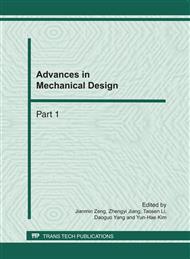p.805
p.811
p.819
p.824
p.831
p.835
p.839
p.845
p.850
Investigation of Vibration on Vehicle Suspension System using Half-car-model
Abstract:
Vibration of the suspension system of a vehicle is crucial for comfort of the passenger. In this paper, a mathematical model of the suspension system is presented with half car model with four degrees of freedom. Vibration characteristics due to different pitch line excitation and different damping coefficients are investigated for heavy vehicle suspension system. The model is simulated in MATLAB SIMULINK for this investigation. ANSYS Structural software has also been used to determine the resonance frequency and mode shape of vehicle bounce and pitch motion.
Info:
Periodical:
Pages:
831-834
Citation:
Online since:
February 2011
Keywords:
Price:
Сopyright:
© 2011 Trans Tech Publications Ltd. All Rights Reserved
Share:
Citation:


